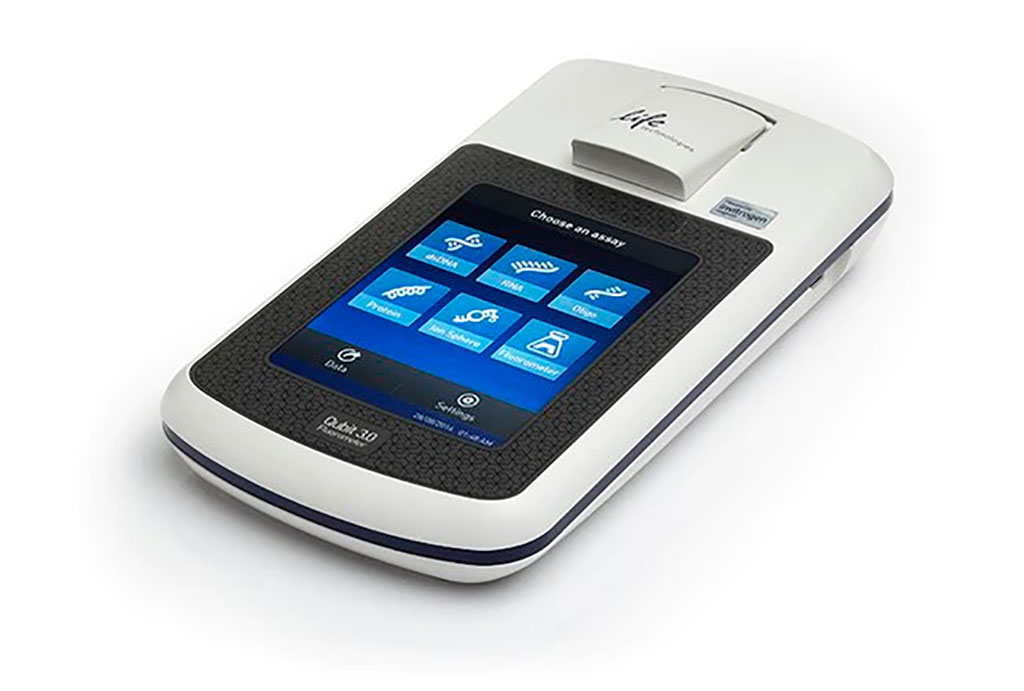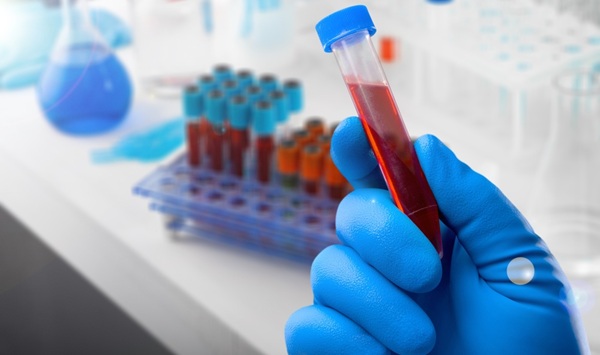Molecular and Cytogenetic Characterization of Myelodysplastic Syndromes in Cell-Free DNA
|
By LabMedica International staff writers Posted on 04 Mar 2022 |

Molecular and cytogenetic studies are essential in patients with myelodysplastic syndromes (MDS) for diagnosis and prognosis. Cell-free DNA (cfDNA) analysis has been reported as a reliable non-invasive approach for detecting molecular abnormalities in MDS, however, there is limited information about cytogenetic alterations and monitoring in cfDNA.
Myelodysplastic syndromes (MDS) are hematopoietic stem cell disorders characterized by dysplasia and ineffective hematopoiesis that are driven by somatically acquired genomic alterations.
Molecular studies and conventional cytogenetics are essential in MDS to establish a correct diagnosis and to set up accurate risk stratification. Routinely, these analyses are performed in bone marrow (BM) samples, in particular cytogenetic analysis as it is difficult to obtain metaphases from peripheral blood (PB) samples.
Clinical Scientists at the Institut Hospital del Mar d'Investigacions Mèdiques (Barcelona, Spain) and their colleagues assessed the molecular and cytogenetic profile of a cohort of 70 patients with MDS by next-generation sequencing (NGS) using cfDNA and compared the results to paired bone marrow (BM) DNA.
BM aspirates were collected and BM DNA was extracted with MagAttract DNA Blood Mini M48 Kit (Qiagen, Hilden, Germany). Cell-free DNA (CfDNA) was isolated automatically using Qiagen’s QIAsymphony SP (QIAsymphony DSP Virus/Pathogen Kit) and quantified with Qubit 3.0 (Thermo Fisher Scientific, Eugene, OR, USA). Genomic characterization was performed in paired sample of BM DNA and cfDNA by next-generation sequencing (NGS) in all patients. Libraries were prepared using a custom panel including 48 myeloid-associated genes. Libraries were sequenced with a 3000× minimum read depth in MiSeq/NextSeq (Illumina, San Diego, CA, USA).
The scientists reported that the amount of total cfDNA obtained in MDS patients (median: 58.4 ng/L) was significantly higher than that obtained from healthy controls (median: 32.4 ng/mL). A positive correlation was observed between the amount of cfDNA and the serum lactate dehydrogenase (LDH) levels. Mutational profiling of BM DNA and cfDNA showed comparable results: mutations were detected in BM DNA and cfDNA, with a 92.1% concordance.
The most frequently 140 mutated genes were TET2 (45.7%), SF3B1 (37.1%), ASXL1 (21.4%), DNMT3A (20.0%), SRSF2 141 (15.7%), ZRSR2 (11.4%) and U2AF1 (11.4%). A strong correlation was observed between the variant allele frequencies (VAF) of BM and cfDNA. The team compared the VAF of the detected mutations in cfDNA and BM DNA grouped by gene and observed that VAFs of SF3B1 mutations were significantly higher in cfDNA than in BM DNA. Cytogenetic/FISH alterations were detected at the time of diagnosis in 20/70 (28.6%) MDS patients. NGS analysis detected abnormalities in 10/70 MDS patients, in both BM DNA and cfDNA.
The authors concluded that that cfDNA mirrors the molecular profile of BM in MDS. In their cohort, enriched with lower risk patients, cytogenetic alterations were detectable in most cases by NGS in both BM DNA and cfDNA. Although further studies with larger cohorts are required to confirm these results, especially for cytogenetic alterations, our data support that the analysis of cfDNA is a promising method to characterize and monitor the molecular abnormalities present in patients with MDS. The study was published on February 22, 2022 in the journal Blood Advances.
Related Links:
Institut Hospital del Mar d'Investigacions Mèdiques
Qiagen
Thermo Fisher Scientific
Illumina
Latest Hematology News
- Viscoelastic Testing Could Improve Treatment of Maternal Hemorrhage
- Pioneering Model Measures Radiation Exposure in Blood for Precise Cancer Treatments
- Platelets Could Improve Early and Minimally Invasive Detection of Cancer
- Portable and Disposable Device Obtains Platelet-Rich Plasma Without Complex Equipment
- Disposable Cartridge-Based Test Delivers Rapid and Accurate CBC Results
- First Point-of-Care Heparin Monitoring Test Provides Results in Under 15 Minutes

- New Scoring System Predicts Risk of Developing Cancer from Common Blood Disorder
- Non-Invasive Prenatal Test for Fetal RhD Status Demonstrates 100% Accuracy
- WBC Count Could Predict Severity of COVID-19 Symptoms
- New Platelet Counting Technology to Help Labs Prevent Diagnosis Errors
- Streamlined Approach to Testing for Heparin-Induced Thrombocytopenia Improves Diagnostic Accuracy
- POC Hemostasis System Could Help Prevent Maternal Deaths
- New Test Assesses Oxygen Delivering Ability of Red Blood Cells by Measuring Their Shape
- Personalized CBC Testing Could Help Diagnose Early-Stage Diseases in Healthy Individuals
- Non-Invasive Test Solution Determines Fetal RhD Status from Maternal Plasma
- First-Of-Its-Kind Smartphone Technology Noninvasively Measures Blood Hemoglobin Levels at POC

Channels
Clinical Chemistry
view channel
VOCs Show Promise for Early Multi-Cancer Detection
Early cancer detection is critical to improving survival rates, but most current screening methods focus on individual cancer types and often involve invasive procedures. This makes it difficult to identify... Read more
Portable Raman Spectroscopy Offers Cost-Effective Kidney Disease Diagnosis at POC
Kidney disease is typically diagnosed through blood or urine tests, often when patients present with symptoms such as blood in urine, shortness of breath, or weight loss. While these tests are common,... Read moreMolecular Diagnostics
view channel
Blood Test Could Predict Bariatric Surgery Outcomes in Teenagers
High blood pressure during adolescence increases the risk of lifelong cardiovascular disease, yet doctors still lack reliable tools to predict which young patients will benefit most from obesity treatments.... Read more
ctDNA Blood Test to Help Personalize Postsurgical Colon Cancer Treatment
For patients with Stage 3 colon cancer, current chemotherapy approaches are highly toxic and lack personalization. Standard treatment involves months of dual-agent chemotherapy, which often causes serious... Read moreImmunology
view channel
Molecular Microscope Diagnostic System Assesses Lung Transplant Rejection
Lung transplant recipients face a significant risk of rejection and often require routine biopsies to monitor graft health, yet assessing the same biopsy sample can be highly inconsistent among pathologists.... Read more
Blood Test Tracks Treatment Resistance in High-Grade Serous Ovarian Cancer
High-grade serous ovarian cancer (HGSOC) is often diagnosed at an advanced stage because it spreads microscopically throughout the abdomen, and although initial surgery and chemotherapy can work, most... Read more
Luminescent Probe Measures Immune Cell Activity in Real Time
The human immune system plays a vital role in defending against disease, but its activity must be precisely monitored to ensure effective treatment in cancer therapy, autoimmune disorders, and organ transplants.... Read more
Blood-Based Immune Cell Signatures Could Guide Treatment Decisions for Critically Ill Patients
When a patient enters the emergency department in critical condition, clinicians must rapidly decide whether the patient has an infection, whether it is bacterial or viral, and whether immediate treatment... Read moreMicrobiology
view channel
Fast Noninvasive Bedside Test Uses Sugar Fingerprint to Detect Fungal Infections
Candida bloodstream infections are a growing global health threat, causing an estimated 6 million cases and 3.8 million deaths annually. Hospitals are particularly vulnerable, as weakened patients after... Read more
Rapid Sepsis Diagnostic Device to Enable Personalized Critical Care for ICU Patients
Sepsis is a life-threatening condition that occurs when the body’s response to infection spirals out of control, damaging organs and leading to critical illness. Patients often arrive at intensive care... Read morePathology
view channel
AI-Powered Method Combines Blood Data to Accurately Measure Biological Age
Chronological age tells us how many years we’ve lived, but not how quickly our bodies are ageing. Some people stay healthy well into their 80s or 90s, while others experience decline much earlier.... Read more
AI Tool Detects Cancer in Blood Samples In 10 Minutes
Detecting cancer recurrence or spread often depends on identifying rare tumor cells circulating in the bloodstream — a process known as a liquid biopsy. However, current methods rely on trained specialists... Read moreTechnology
view channel
Viral Biosensor Test Simultaneously Detects Hepatitis and HIV
Globally, over 300 million people live with Hepatitis B and C, and 40 million with HIV, according to WHO estimates. Diagnosing bloodborne viruses such as HIV and Hepatitis B and C remains challenging in... Read more
Acoustofluidic Device to Transform Point-Of-Care sEV-Based Diagnostics
Rapid and sensitive detection of small extracellular vesicles (sEVs)—key biomarkers in cancer and organ health monitoring—remains challenging due to the need for multiple preprocessing steps and bulky... Read moreIndustry
view channel
Advanced Instruments Merged Under Nova Biomedical Name
Advanced Instruments (Norwood, MA, USA) and Nova Biomedical (Waltham, MA, USA) are now officially doing business under a single, unified brand. This transformation is expected to deliver greater value... Read more




















